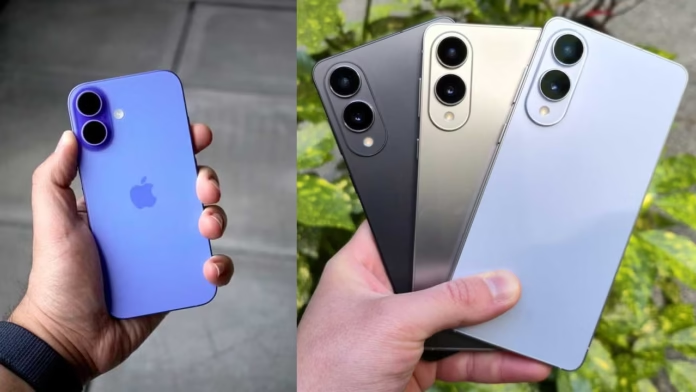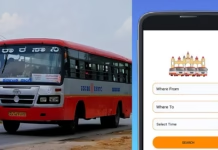In an era where every smartphone carries not just a hefty price tag but also the promise of support and service, navigating the maze of warranties can feel like decoding a riddle with moving parts. The advent of dedicated mobile apps designed to verify device warranty status has shifted this narrative, offering users a window into their device’s life beyond mere purchase. These tools bridge the gap between consumer expectations and manufacturer commitments, simplifying a task once fraught with confusion.
Why Warranty Verification Apps Matter
For many users, the moment of unpacking a new device is when hope meets technology. The warranty represents a safety net when things go wrong. However, traditional methods of checking warranty—digging through paperwork, hunting for serial numbers, or exploring obscure web portals—are cumbersome and error-prone. A purpose-built app centralises this process, offering real-time insight into coverage status and thus enabling smarter decisions, whether it’s buying second-hand, submitting a repair claim, or simply knowing whether your handset is still under protection.
What Features to Look For
When evaluating an app for warranty verification of your mobile device, several features stand out. First, accuracy: an app must communicate with official databases or manufacturer servers to retrieve correct warranty info. Second, ease of use: scanning a barcode or IMEI should trigger the check without complicated steps. Third, transparency: it should clearly display start and end dates, geographic limitations, and types of coverage. Together, these capabilities ensure you don’t end up surprised by a claim that the device is out of warranty.
How Apps Interface with Manufacturer Systems
Behind the scenes, warranty apps act as intermediaries, querying manufacturer or brand-authorised servers with identifiers like IMEI, serial number or model code. For example, manufacturers such as Samsung allow you to sign in and view warranty coverage for your device through their official portal.
Samsung au
When an app leverages this kind of official infrastructure, you gain legitimate confirmation of whether your phone is still covered. The real challenge lies in whether the app updates promptly, supports your region, and handles multi-brand devices.
Use Cases: Buying Pre-Owned or Refurbished Devices
One of the most practical use cases for a warranty verification app arises when buying a second-hand or refurbished phone. Verifying that the warranty still stands—and hasn’t been used or expired—can significantly affect the device’s value and your peace of mind. Many buyers neglect this check, only to discover that a few months later a fault emerges and the warranty is void. A verification app turns that unknown into a verified ideal.
Benefits Beyond Just Coverage Status
Beyond simply telling you whether your device is still under warranty, a good app can flag other red flags. It might reveal if the handset was reported stolen or if significant repairs have been logged. Some apps even monitor diagnostics like battery health or usage patterns, helping you assess overall device reliability. This added layer of insight elevates the tool from a simple check to a meaningful diagnostic resource.
Regional and Brand Limitations
While warranty verification apps are a boon, they come with caveats. Not all manufacturers publish full warranty data accessible to third-party apps. Some regional markets restrict data sharing across borders or limit warranty transferability between countries. For example, Samsung explicitly notes that service for certain models purchased abroad may only be available in the country of original sale.
Samsung au
Users should always check whether the app supports their device’s brand, model, region of purchase and warranty transfer rules.
Security and Privacy Considerations
As with any utility app that queries identifiers like IMEI or serial numbers, security is paramount. A reliable warranty verification app should encrypt the data it sends, minimise permissions, and clearly state its privacy policy. Some lesser-known apps might collect device data for marketing purposes or traffic researchers, so users should scrutinise permissions and trust ratings in app stores. Prioritising apps with transparent practices prevents inadvertent data exposure.
Cost Implications for Consumers
From a monetary perspective, verifying warranty using an app can translate into significant savings. By knowing the coverage status upfront, consumers can negotiate better on second-hand purchases, avoid paying full price for devices with lapsed or void warranties, and sidestep unexpected repair costs. The app essentially becomes a cost-avoidance tool, making it highly relevant in high-CPC markets where device value and repair costs are substantial.
Integration with Service and Repairs
Modern warranty verification apps increasingly connect users not just to warranty status but directly to service options. Some will guide you to authorised service centres, allow you to book repairs, and even upload tickets or photos if a fault arises. The shift from static information to active service integration enhances user experience and ensures quicker resolution when problems actually occur.
How It Fits into a Holistic Device Management Strategy
We don’t use our phones in isolation — they’re part of our digital ecosystem. A warranty verification app fits neatly into a broader device-management strategy that includes monitoring battery health, tracking software updates, ensuring secure backups and managing insurance or repair claims. By being proactive about warranty status, users position themselves to act rather than react, creating a smarter ownership lifecycle.
Choosing the Right App: Criteria and Checklist
When selecting a warranty verification app, consider brand compatibility (does it support your phone’s manufacturer?), accuracy of data (does it pull directly from official sources?), region coverage (does it work for India, for example?), user reviews (are there complaints of outdated data?) and added features (does it integrate diagnostics or service bookings?). These criteria help you distinguish between a basic tool and a comprehensive solution.
Oneplus
Vivo
Redmi
Poco
Samsung
iPhone
Common Missteps and How to Avoid Them
Many users make the mistake of assuming that any app labelled “warranty checker” will provide correct or legally binding coverage data. Others fail to account for warranties that exclude certain parts, repairs or geographical conditions. To avoid these pitfalls, always cross-check with manufacturer portals when possible, understand the terms of the warranty (what’s covered, for how long, and under what conditions), and use the app as a preliminary check, not the sole authority.





